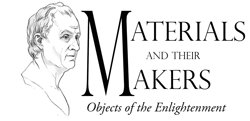ahn-sik-lo-pe-di
The Dawn of Accessible Public Knowledge:
A Pre-Modern Wikipedia
The Encyclopédie, or Systematic Dictionary of the Sciences, Arts, and Crafts is an encyclopedic text published in France in the eighteenth-century that is uncontested as the greatest source of enlightened thought. Edited by Denis Diderot and Jean le Ronde d’Alembert, the Encyclopédie includes texts contributed by André Le Breton, Montesquieu, Jean-Jacques Rousseau, and Voltaire among others. The ideals of the Enlightenment focus on the individual self and the creation of identity as something that can be formed through knowledge and an understanding of the world. The Encyclopédie set out to be a forum for new ideas that would exist to consolidate new technologies, theories of science, and ideals about art.
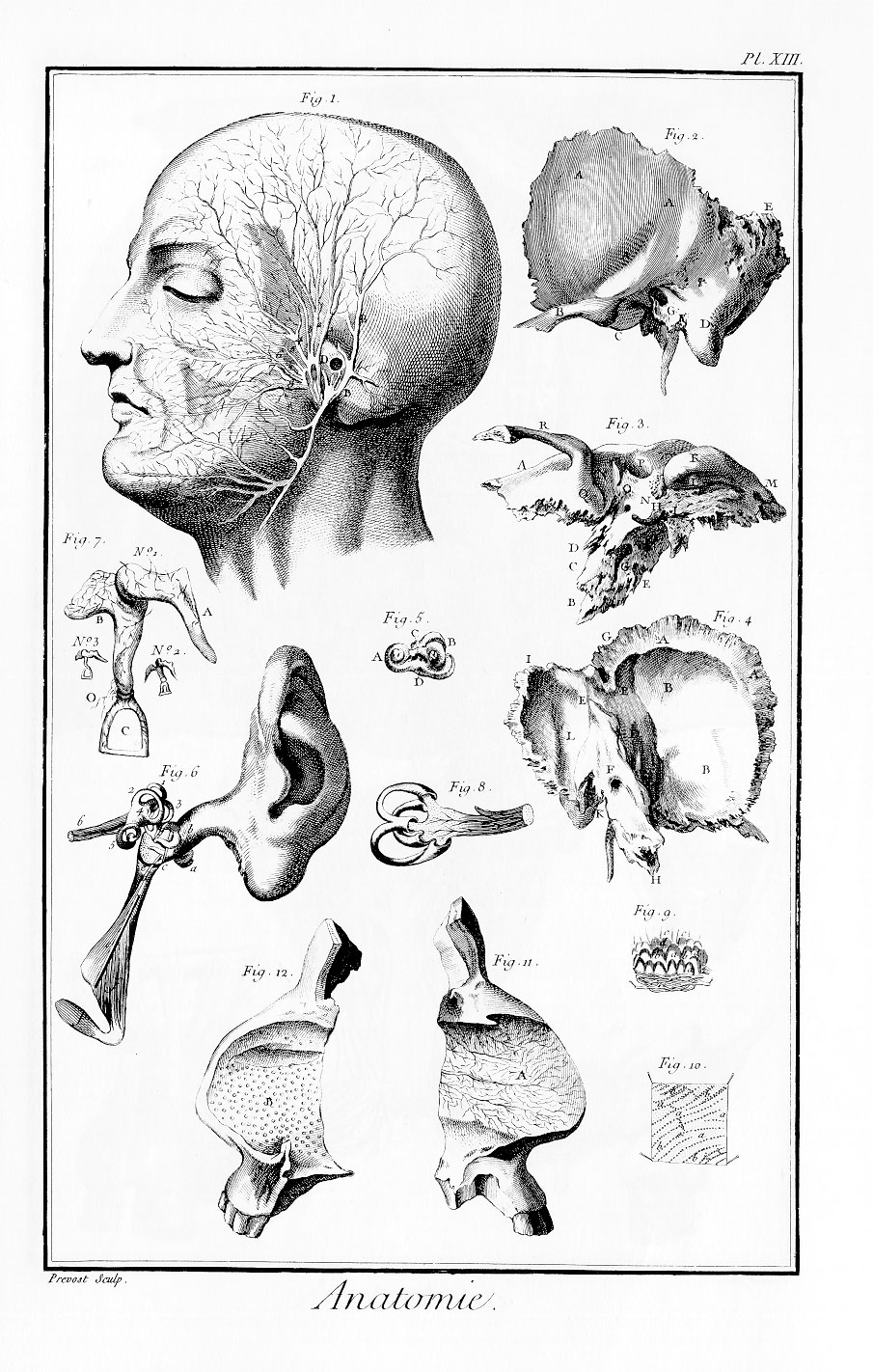 |
This plate illustrates the form and function of the human ear. During the enlightenment, people were starting to think about the body’s functions as parallel to those of machinery; especially in regards to the brain’s ability to process information. For Diderot, a human’s capacity for knowledge was something he believed could transcend class and profession. The ability to process knowledge is foundational to enlightenment thought and Diderot’s Encyclopédie. |
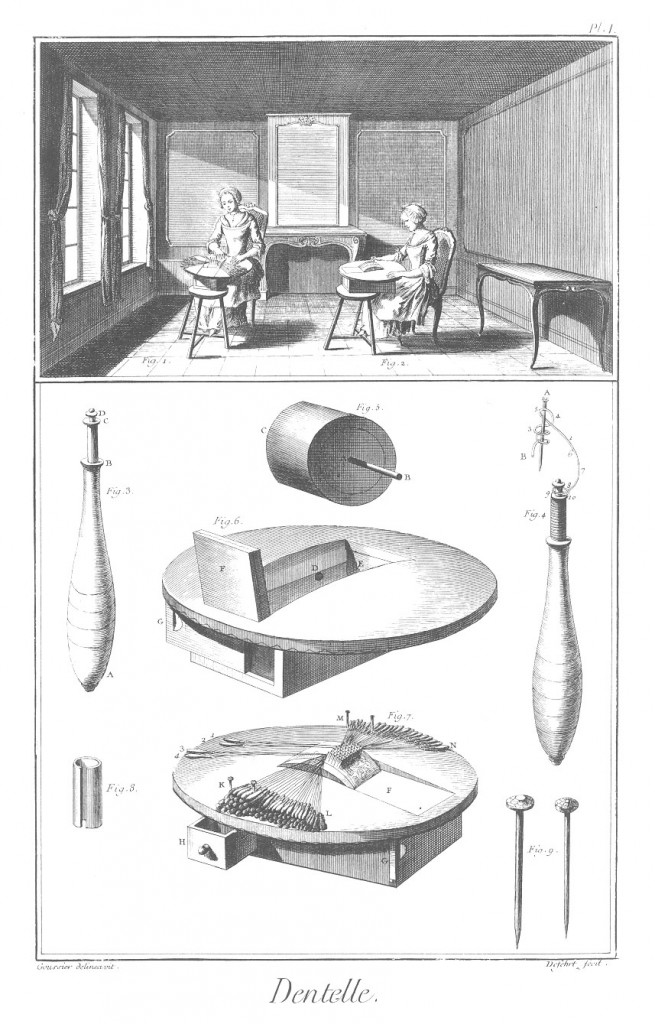 |
Dentelle is the french word for lace and this plate is an illustration of the process of lace production. In the top part of the plate, two women are depicted at work producing lace and below the tools used to formulate lace are enlarged and visually annotated. A notable fact is that lace makers at the lace manufacture at Alençon, one of the most prestigious lace production guilds in eighteenth-century France, could each produce no more than three square centimeters of lace per day. |
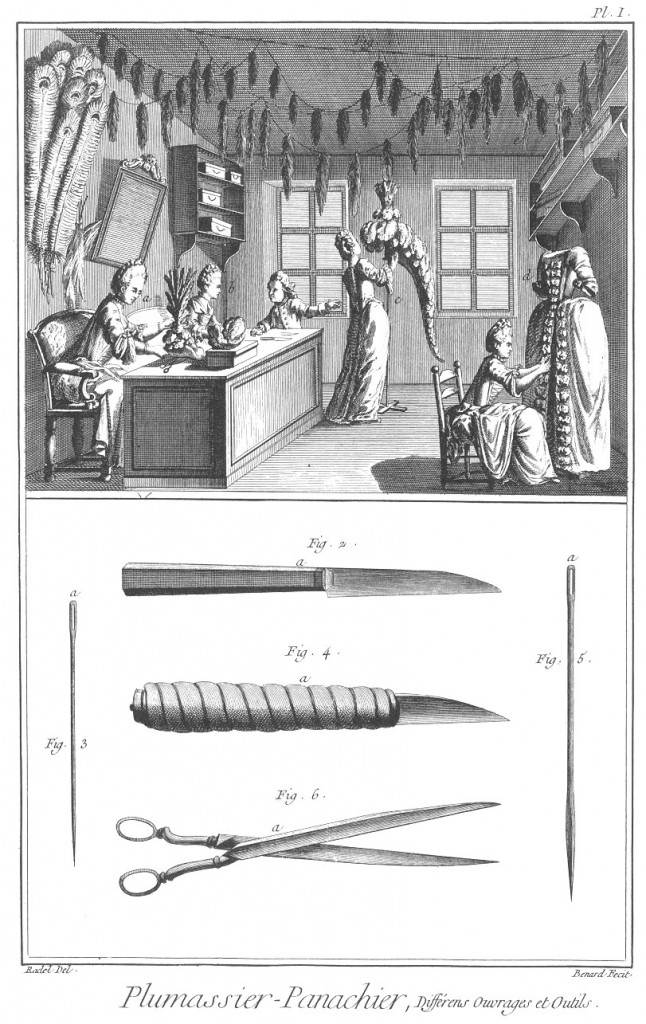 |
This plate illustrates a guild of workers who specialize in affixing different accoutrements such as tassels, feathers, and ribbons to textiles. In regards to eighteenth-century clothing, lace, feathers, tassels, buttons, and ribbons would be added to the base textile used for a garment in order to enhance its quality. The top portion of this plate from the Encyclopédie illustrates craftspeople at work on hats, adding accoutrements to the back of a woman’s gown, and a woman in the background creating a horse’s headdress. The bottom portion depicts two types of knives used in slicing feathers and string, a pair of thin sharp scissors likely used for similar tasks, and two variations of needles used to sew accessories to textiles. |
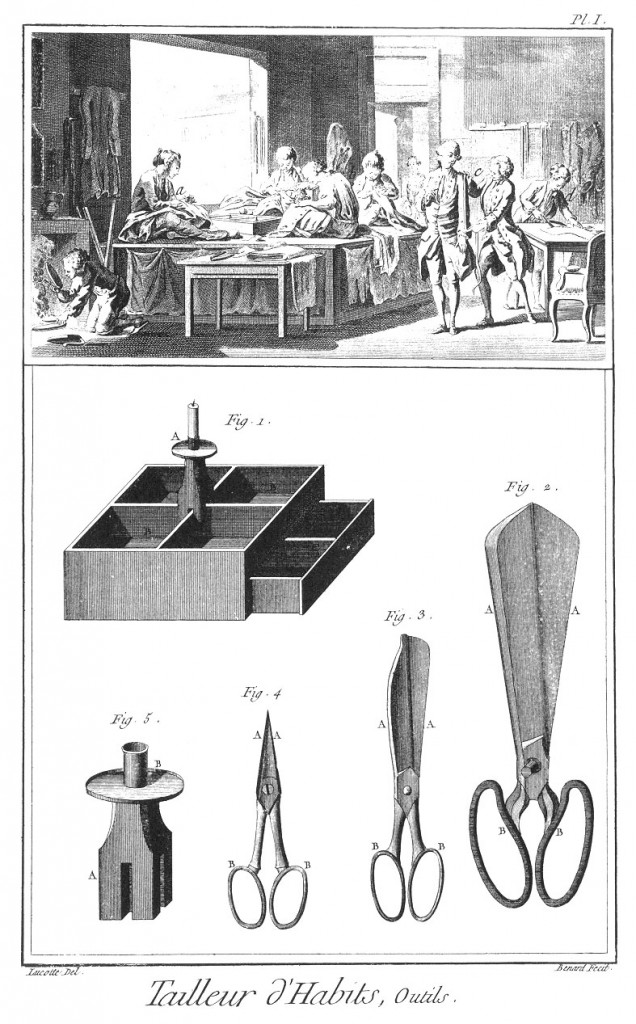 |
The Tailleur d’Habits are the tailors of eighteenth-century France whose specialty was constructing garments. This plate seeks to visually dictate the interior of a clothing guild, showing both artisans at work and attending to the measurements of customers. Furthermore, sheers of differing width, function, and sharpness are detailed in the bottom portion of the plate alongside a spindle and a pin box. |
 |
The Fondeur en Sable is the guild that tended to the casting of metals. Bronze, silver, and gold metal casting were most prominent to the decorative arts of eighteenth-century France. The top half of this plate shows workers preparing casts and checking them in the kiln, while the bottom half provides visual models of how sand casts were used to make metal objects. This plate highlights guild workers sand casting metal objects. |
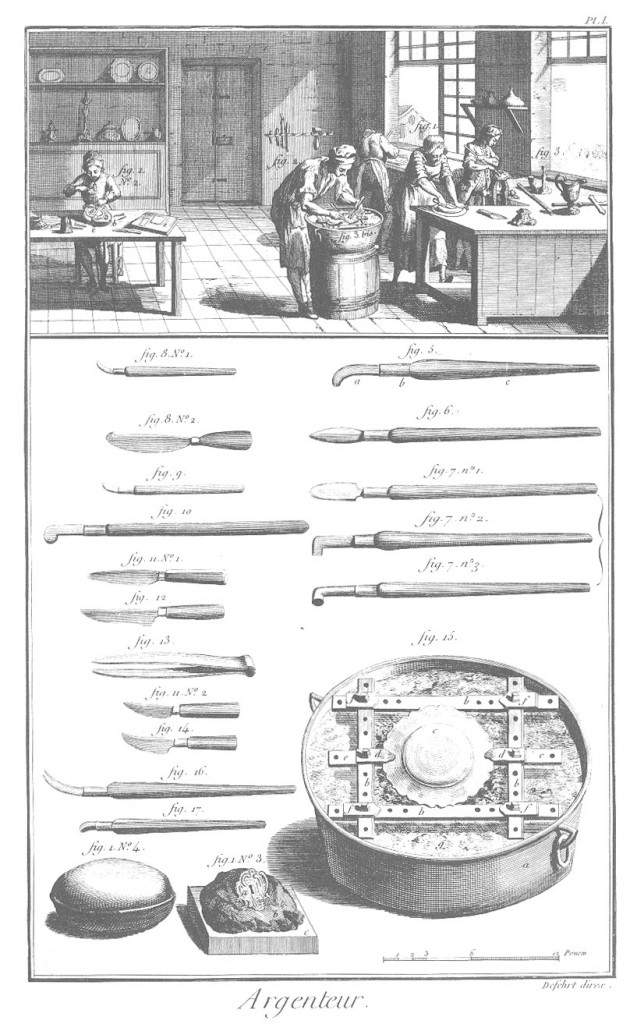 |
This plate illustrates the processes of the argenteurs, or silversmiths. An argenteur would take the cooled cast of silver, produced at the Fonder en Sable, and use tools like the ones enlarged in the bottom portion of this plate to etch and engrave motifs, coats of arms, and other design elements. |
 |
The Èbiniste de Marqueterie was the guild charged with construction of wood furniture as well as inlaying pieces with decorative wood designs. This plate exemplifies varied mechanic devises used to perform production tasks at the marquetry guild. |
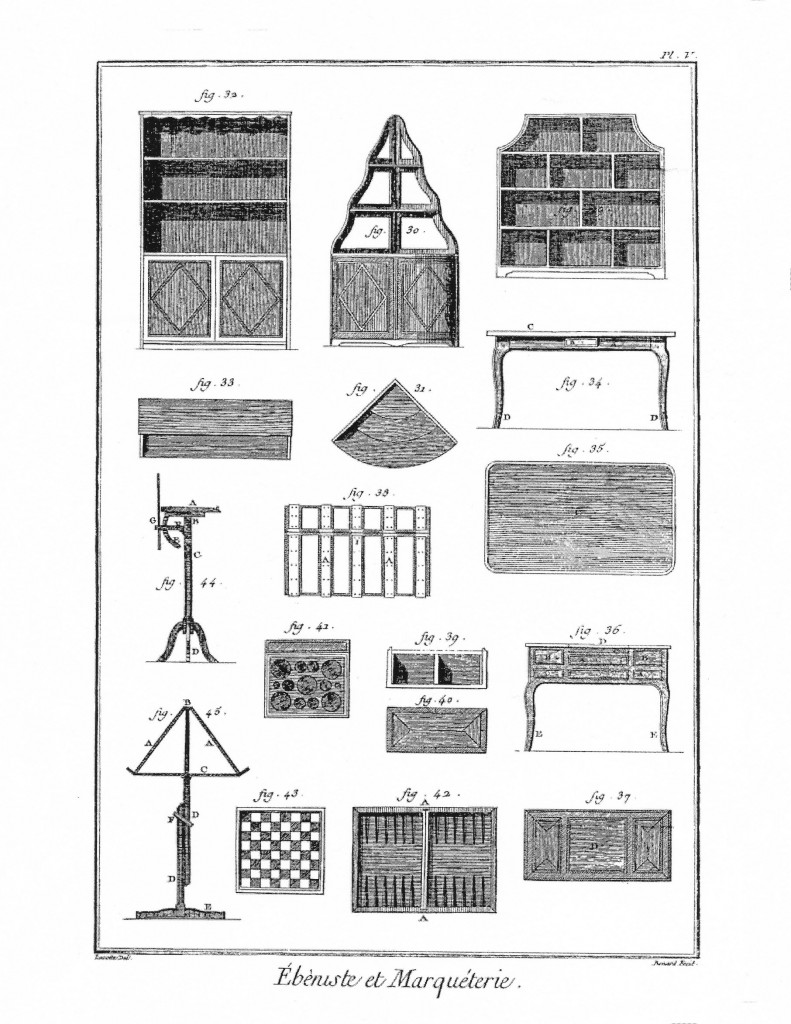 |
This plate shows the craft of the marquetry guild. Examples illustrated in this plate include commodes, writing tables, armoires, a section of a folding card table, a music stand, as well as drawers and inserted woodworked trays. |
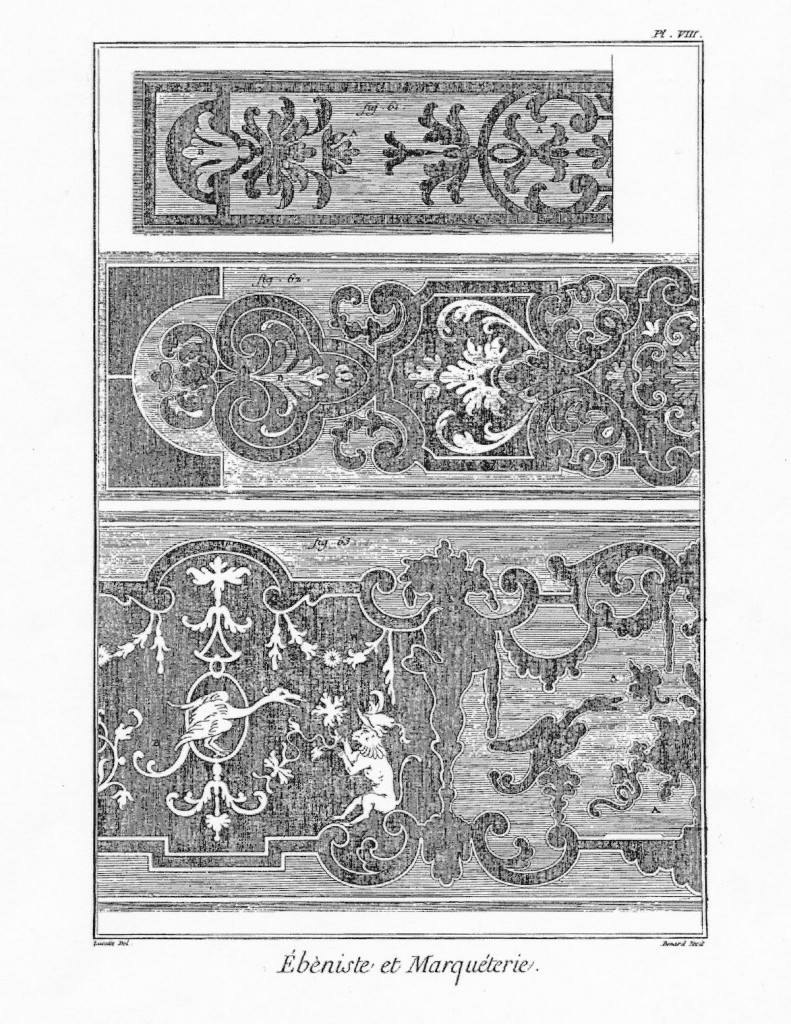 |
This plate shows different examples of marquetry design as well as the aesthetic possibilities in the incorporation of multiple types of wood; the intricate details illustrated in these three panels are jig-saw pieces of different types of wood of different colors aligned together in beautiful designs. |
